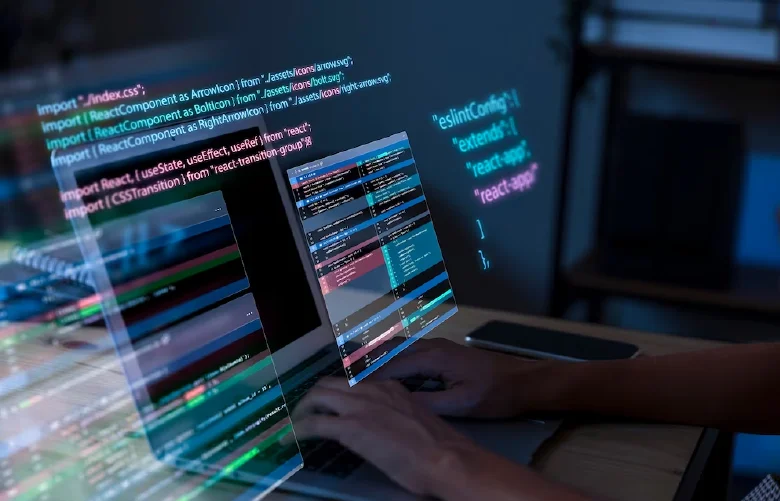- NumPy
- Scipy
- Scikit-learn
- Theano
- TensorFlow
- Keras
- PyTorch
- Matplotlib
- Seaborn
- Pandas
1. NumPy
NumPy is a popular Python module that programmers widely used for complex numerical calculations. It is one of the best Python libraries that processes a huge data stack and executes array calculations/computations.
Developers prefer using NumPy for its various functionalities to handle multi-dimensional, high-performance arrays. From division and multiplication to addition and subtraction, developers can perform multiple common operations using NumPy’s wide variety of mathematical functions.
The best part is that it integrates seamlessly with other Python libraries like Matplotlib and Pandas.
2. Scipy
One of the most deserving inclusions in the Python libraries list in this article is SciPy. It is a technological computing and accessible science package with tools for multi-dimensional picture processing, linear algebra, statistics, optimization, integration, interpolation, and more.
This library is built on NumPy and can carry out complex mathematical operations, such as signal processing or calculus. Many developers use it as an alternative to NumPy.
3. Scikit-Learn
Scikit-Learn–associated with SciPy and NumPy–is now one of the most demanding Python libraries in the developers’ community for its ability to work with complex data.
This library underwent a series of changes and modifications. The cross-validation feature is one such change that enables developers to leverage more than a single metric while performing mathematical computations.
It includes a range of data structures and algorithms to implement data mining and standard ML tasks. Explore this article on the overview of data structures and algorithms to better understand what this library entails.
4. Theano
Theano is considered one of the promising Python libraries for its machine-learning capabilities. This mathematical computation library enables developers to ideate and devise deep learning models with its state-of-the-art features. If you’re currently pursuing an AI & ML course, you’ll soon learn how to use this Python library.
Not all Python libraries, but Theano allows seamless integration with NumPy. When developers use this library with a GPU instead of a CPU unit, it becomes 140 times faster for complex data computations.
5. TensorFlow
TensorFlow is another excellent addition to the above-mentioned Python libraries list.
With an amazing community of over 1500 contributors, 35,000 comments and the capability to execute high-performance mathematical computations, TensorFlow has earned the reputation of being one of the best machine-learning libraries across numerous scientific fields.

It is nothing but an ML framework that defines and runs computations involving tensors – partially demonstrated computational objects that generate a value at some point.
6. Keras
Keras is one of the smartest and most efficient Python libraries to date. Developers who hold a keen interest in machine learning often opt for this library. It exhibits neural networks to developers in no time.
Also, Keras is the ideal choice for developers when viewing graphs, processing data sets, or compiling models. Furthermore, it is highly beneficial for backend developers as Keras is compatible with other Python libraries like TensorFlow or Theano.
7. PyTorch
Although relatively new, PyTorch has now become one of the widely used Python libraries for its two top-notch features –
- Using tape-based auto diff system to develop neural networks
- Using strong GPU acceleration for Tensor computation
PyTorch offers a robust and substantial platform to implement deep learning models with enhanced speed and flexibility devised to be seamlessly integrated with Python.
8. Matplotlib
Another great inclusion in the Python libraries list is Matplotlib. This Python package lets developers visualize and plot data to create interactive, animated, and static visualizations.
It offers a range of visualizations like subplots, line plots, histograms, images, bar charts, tables, paths, pie charts, log plots, filled curves, stream plots, and data handling. What makes this library so appealing is its capability to export visualizations and images to multiple file formats.
9. Seaborn
The Python libraries list includes a Python package similar to Matplotlib – Seaborn. This is specifically designed for developers with data visualization and plotting needs. Seaborn is an open-source Python library that was built on Matplotlib.
However, the library comes with some of the extensive data structures and algorithms of Panda – another Python library that we shall discuss in the next section. Seaborn is a fully featured Python package with a top-notch interface that enables developers to make statistical graphs that are both informative and accurate.
10. Pandas
Pandas, also known as Python data analysis, is the last from our Python libraries list. It is a much-needed Python package in the data science life cycle. This library is widely accessed for data cleaning and data analysis. Its flexible and fast data structures, like data frame CDs, make it a widely preferred choice.
Want to learn more about such data structures? Check this article on the various Types of Data Structure in detail.










